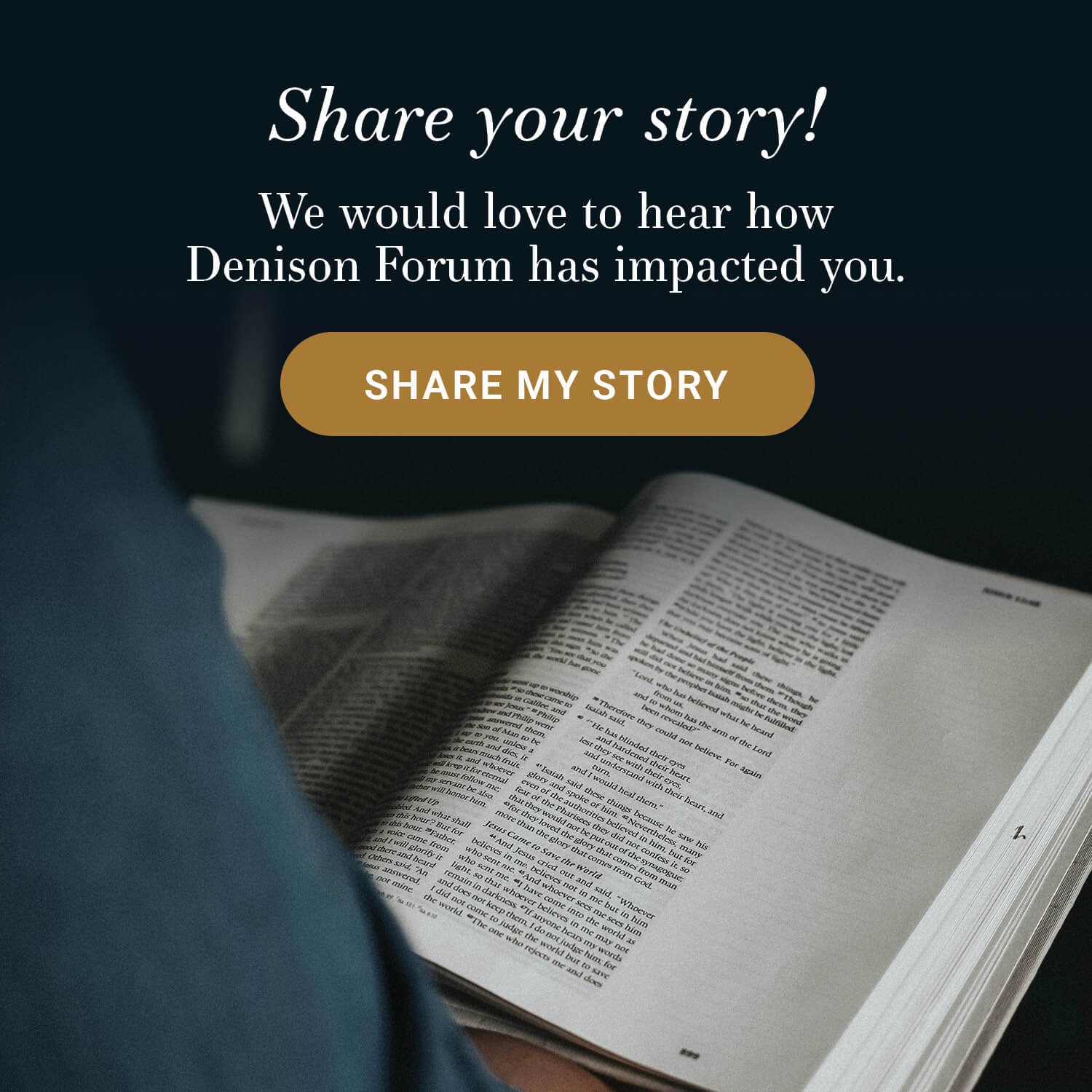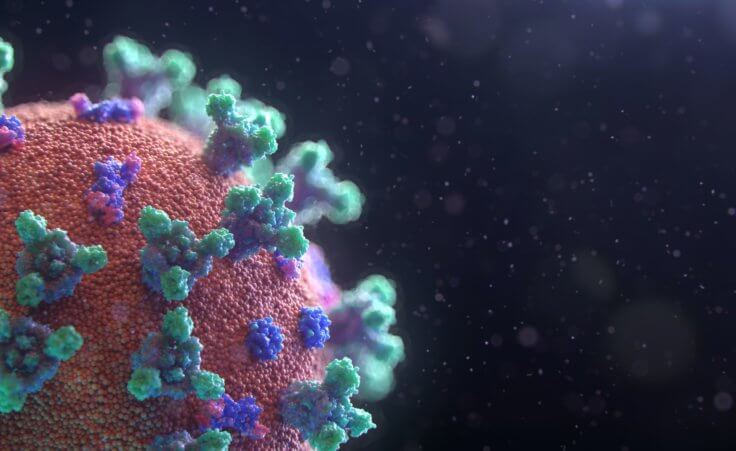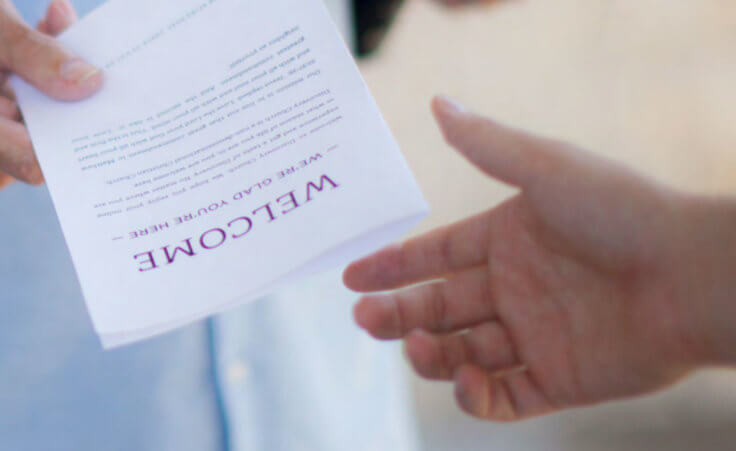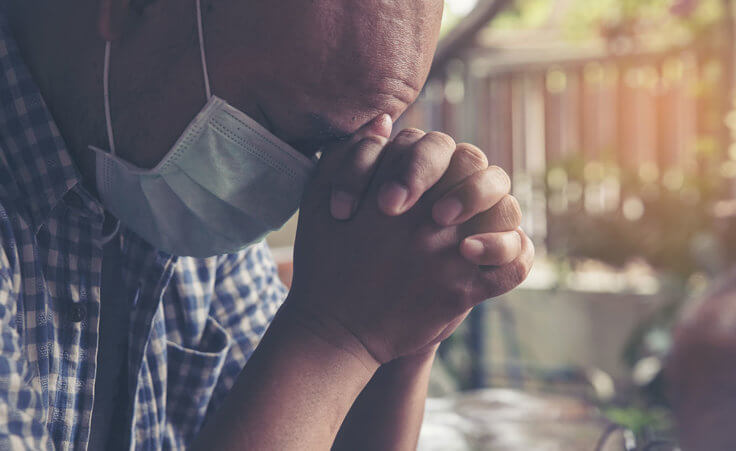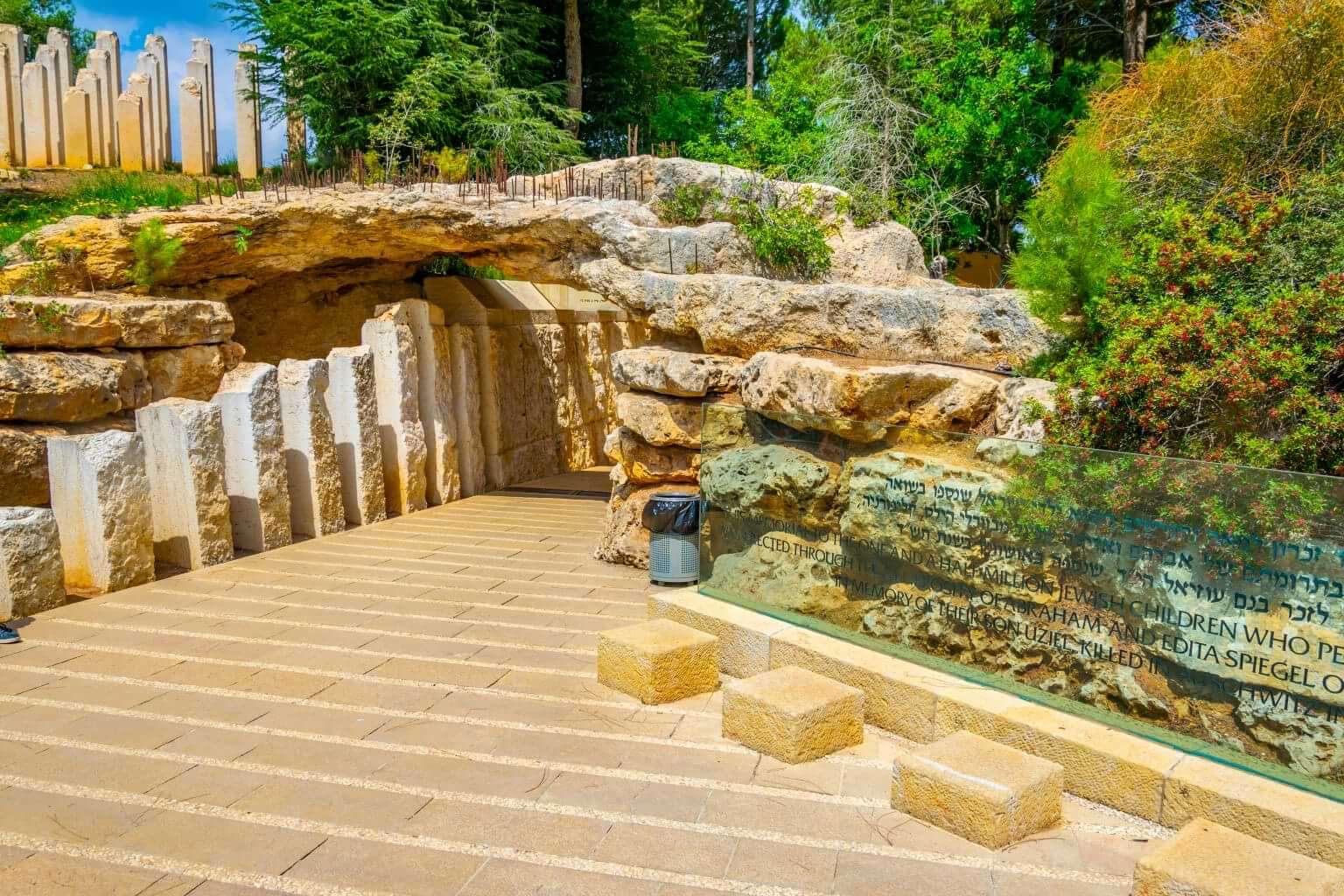
The entrance to the Yad Vashem Children's Memorial in Jerusalem shows pillars in the background and a walkway into an underground memorial. dudlajzov/stock.adobe.com
Come with me to the Children’s Memorial at Yad Vashem in Jerusalem.
As you approach its entrance, you see the sculpted smiling face of Uziel Spiegel, who was murdered by the Nazis at Auschwitz at the age of two and a half. The memorial was built with a donation from his parents, Abe and Edita Spiegel.
Uziel was just one of the 1.5 million Jewish children slaughtered by the Nazis.
You step into the dark cavern and make your way along the outer wall. To the interior are memorial candles, a customary Jewish way of remembering the dead. They are reflected in mirrors to represent millions of stars shining in the night sky, each one standing for one of the murdered children. Meanwhile, the names of the children along with their ages and countries of origin are read in the background.
Across my thirty-five trips to Israel, every time I visited the memorial, I wept.
The meaning of “shoah”
January 27 is International Holocaust Remembrance Day, so designated by the United Nations General Assembly to coincide with the liberation of Auschwitz-Birkenau, the Nazis’ largest extermination and concentration camp, by Soviet soldiers on January 27, 1945.
On this day, the world is called to remember the millions of Jews, Romanis, political dissidents, intellectually disabled, and homosexuals murdered by the German Nazi regime between 1933 and 1945.
However, their crime was not actually a “holocaust.”
That word comes from the Greek holos (“whole”) and kaustos (“burned”), signifying a sacrificial offering burned on an altar. But no one who was murdered by the Nazis chose to die. None made a willing sacrificial offering of themselves.
As a result, my Israeli friends call this tragedy not the “Holocaust” but the Shoah, Hebrew for “catastrophe.”
While Israel’s official memorial to the victims, Yad Vashem, is often called a “holocaust museum,” the Hebrew actually means “a memorial and a name.” Accordingly, it is less a museum than a “memorial” explaining how the Shoah happened so it can never happen again. And it is a depository for the names of the Shoah’s victims, many of whom have no one to carry their name after their deaths.
Facts about the Shoah
Scholars and historians have calculated that Nazi Germany murdered six million Jews, one-fourth of whom were children:
- Approximately 2.7 million were murdered at killing centers: Auschwitz-Birkenau (approximately 1 million), Chelmno (at least 167,000), Belzec (approximately 435,000), Sobibor (at least 167,000), and Treblinka (approximately 925,000).
- About 2 million were murdered in mass shooting operations and related massacres in more than 1,500 cities, towns, and villages across occupied eastern Europe.
- Between 800,000 and 1 million Jews were murdered in ghettos, labor camps, and concentration camps.
- At least 250,000 Jews were murdered in antisemitic riots, individual executions, and on forced marches, trains, and ships.
In addition, Nazi Germany and its allies murdered more than six million others:
- Around 3.3 million Soviet prisoners of war
- Around 1.8 million non-Jewish Poles
- Between 250,000 and 500,000 Romani men, women, and children
- More than 310,000 Serb civilians
- Between 250,000 and 300,000 people with disabilities
- Tens of thousands of German political opponents and dissenters (one of whom was the famed theologian Dietrich Bonhoeffer)
- Around 35,000 Germans imprisoned in concentration camps as “professional criminals” and “asocials”
- Around 1,700 Jehovah’s Witnesses
- Hundreds and possibly thousands of homosexuals
- Perhaps hundreds of Black people in Germany
Why did the Shoah happen?
Why did the Nazis attempt their so-called “Final Solution,” their genocidal attempt to exterminate the Jews?
They believed the Aryan race to be superior to all others. They persecuted and often sought to eradicate racial groups and others they considered inferior to themselves—primarily the Jews, but also Romani, people with disabilities, Poles, Russians, and Black people. They also persecuted those whose ideology they opposed such as Communists, Socialists, Jehovah’s Witnesses, gay men, and those they considered to be “asocials” and “professional criminals.”
As Yad Vashem explains so vividly, the roots of German antisemitism go back centuries before Hitler. There was a widespread belief in Christian Europe that the Jews were responsible for the death of Christ and that they, by refusing to accept the Christian faith, were agents of the devil.
During the Middle Ages, laws restricted and prevented them from owning land or holding public office. They were excluded from most occupations, which forced them to make a living through money-lending, trade, and commerce. Then, when they became successful at these trades, they were accused of using them to oppress their non-Jewish clients and community.
They were also accused of causing plagues, murdering children for religious rituals, and secretly conspiring to dominate the world. The book The Protocols of the Elders of Zion was especially significant in this strategy and is considered “the most important text in the arsenal of antisemitism.” Purporting to be the confidential minutes of a Jewish conclave convened in the last years of the nineteenth century, the hoax spells out the alleged secret plans of Jewish leaders to attain world domination.
After World War I, the new Nazi Party and its leader, Adolf Hitler, blamed the Jews for Germany’s defeat, claiming that German Jews had “stabbed Germany in the back.” While German Jews fought and died for their country during the war, Hitler’s accusations resonated with the defeated nation. When his party took power in 1933, their antisemitic racism became official government policy.
Their strategy of exterminating the Jewish people was the culmination of many years of evolving Nazi policy, beginning with Hitler’s earliest writings about the need for a “solution” to the Jewish question in Europe. The Nazis then attempted to introduce mass emigration during the 1930s, followed by a plan for collective exile to a specific destination, and finally, by 1941, the mass extermination of Jews.
Why a “remembrance day”?
The Shoah was an unspeakable tragedy, the largest murder of innocents in human history.
However, we might wonder if an International Holocaust Remembrance Day is a helpful response. What is the purpose of such an annual event? Is this to inflict guilt and shame? Will it keep the world from moving on?
Let’s consider three responses.
One: Remembering the past is a biblical practice and discipline.
The Jewish people are taught in Scripture to keep numerous “days” as memorials. For example:
- They were told to observe their Passover each year to remember their liberation from Egyptian slavery (Exodus 23:15).
- They observe Shavuot, the Feast of Weeks (Leviticus 23; Numbers 28), to commemorate the first fruits of the harvest and remember the giving of the Torah on Mount (Christians typically refer to this holiday as Pentecost.)
- Each fall, they observe Rosh Hashanah, the Jewish New Year, followed by Yom Kippur, the Day of Atonement, which is the last of Ten Days of Repentance that begin with Rosh Hashanah (Leviticus 16:29–32). Yom Kippur is the holiest day of their year.
- They celebrate Sukkot, the Festival of Tabernacles, four days after Yom Kippur (Leviticus 23:33–34). This is a harvest festival that also commemorates the Jews’ wanderings in the wilderness for forty years under Moses; accordingly, they erect booths as temporary structures to resemble those in which the Israelites lived in the desert.
Similarly, Jesus taught us to commemorate his death by taking the Lord’s Supper “in remembrance of me” (1 Corinthians 11:25). Many churches do this every Sunday; all do so at various times through the year.
Two: Remembering the past helps us understand the present and prepare for the future.
James Baldwin claimed, “We are our history.” George Orwell similarly observed, “Who controls the past controls the future.” And “no man is an island,” as John Donne reminded us.
When we remember the evils of the past, we are better prepared to prevent them in the present and the future. What happened to anyone can happen to everyone. For example, German Pastor Martin Niemöller, who was incarcerated by the Nazis, later testified:
First they came for the socialists, and I did not speak out—because I was not a socialist. Then they came for the trade unionists, and I did not speak out—because I was not a trade unionist. Then they came for the Jews, and I did not speak out—because I was not a Jew. Then they came for me—and there was no one left to speak for me.
Three: Remembering the past demonstrates God’s faithfulness.
God testified: “I the Lᴏʀᴅ do not change” (Malachi 3:6). Nor does human nature change—we still face the same challenges, feel the same fears, and harbor the same hopes as our ancestors. Remembering what God has done in the past encourages us to trust him to do the same today.
All of God there is, is in this moment.
What can we do now?
There are dangers with responses such as the International Holocaust Remembrance Day. We can participate as a form of “virtue signaling” and the legalism against which Paul warned (Colossians 2:16–19). We can also act only out of guilt and obligation.
The better response is to act with genuine contrition where appropriate that leads to practical and redemptive acts in gratitude and worship to our Lord (Romans 14:5–9).
Consider three steps we can take today.
One: “Pray for the peace of Jerusalem” (Psalm 122:6).
Such intercession is especially urgent in the aftermath of the October 7 atrocities. Israel is facing an existential threat to her national future. Her people desperately need our intercession and support.
As we pray for Israel, we should also pray for the Palestinians, Lebanese, and Iranians, asking that they be liberated from their autocratic oppressors. We should pray for God’s protection for civilians in Gaza, Lebanon, Iraq, and Syria. And we should pray for wisdom for our leaders as they seek to promote peace that secures stability and Israel’s future in this war-torn region.
Most of all, we should pray that those in this region come to Christ as their Messiah and Lord. He is the only Prince of Peace, the one true path to the peace with God, others, and ourselves we so desperately need.
Two: Use our cultural influence for good.
Each of us has a digital platform. We can use it to call others into intercession, to promote peace with righteousness, and to advance God’s kingdom.
Three: Find practical ways to serve.
According to a recent report, about 245,000 Jewish survivors are still living across more than ninety countries. Nearly half (49 percent) live in Israel, 18 percent in Western Europe, 16 percent in the US, and 12 percent in countries of the former Soviet Union. Perhaps you know or can find such a survivor in your community and reach out to them with your encouragement and support.
Your faith community could partner with Jewish communities where you live to promote the common good. You could volunteer time and resources with ministries that serve survivors and others in need. And you can share your faith with your Jewish friends, inviting them to know their Messiah personally.
Br. James Koester of the Society of St. John the Evangelist in Boston observed:
John’s Gospel reminds us that the “Word became flesh and lived among us.” In this act of enfleshment, God did much more than simply take on a human body. He took on our limitations, our finitude, even our disfiguration. In the incarnation, God submitted to death, disease, and loss; pain, grief, and sorrow; boredom, loneliness, and fatigue; worry, anxiety, and disquiet. God took all this on in the person of Jesus, and that is a thing full of wonder.
Now he invites us to join him as we extend Jesus’ earthly ministry to his Jewish people around the world.
Conclusion
Antisemitism is surging on college campuses, part of a rising tide of animosity against Jews in America, Europe, and around the world. The Anti-Defamation League is reporting an unprecedented 337 percent increase in antisemitic incidents after October 7.
In a recent podcast conversation with one of my dearest friends in Israel, we learned that Hamas’ invasion has created a new level of anxiety and fear among Israelis. They now know that the Israeli Defense Forces cannot be certain to protect them from their enemies. They are watching conflicts escalate to their west, north, and east. This is a perilous time for the State of Israel and her people, both Jews and Arabs.
As a result, the International Holocaust Remembrance Day and the cause it represents could not be more relevant to us and our nation.
Each time I visited Yad Vashem, I stopped to read again the statement by poet Kurt Tucholsky inscribed on one of its walls:
A country is not just what it does—it is also what it tolerates.
For the sake of the Jewish people, what will we do?
What will we tolerate?



